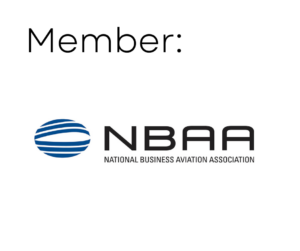by Kyle Schrandt
The aviation industry has always been at the forefront of technological innovation, yet one area that has long remained steeped in tradition is aircraft record-keeping. Traditionally, maintenance logs, flight hours, and compliance records were meticulously documented in physical logbooks. While reliable, this method posed several challenges, including susceptibility to damage, difficulty in data retrieval, and the potential for human error. However, the advent of digital technologies is revolutionizing this critical aspect of aviation management. This article explores the transition from traditional paper-based methods to modern digital record-keeping in aviation and the transformative impact of advanced technologies.

The Challenges of Traditional Record-Keeping
Before delving into the benefits of digital record-keeping, it is essential to understand the limitations and challenges associated with traditional paper-based methods:
- Susceptibility to Damage: Paper records are vulnerable to environmental factors, accidents, and mishandling, which can lead to loss or degradation of crucial information.
- Data Retrieval Issues: Searching through physical logbooks for specific entries can be time-consuming and inefficient, leading to operational delays.
- Human Error: Manual data entry is prone to errors, which can compromise the accuracy and reliability of the records.
- Storage and Maintenance Costs: Storing and maintaining physical records requires significant space and resources, leading to substantial long-term costs.
The Digital Transformation in Aircraft Record-Keeping
The transition from paper to digital record-keeping is a significant leap forward for the aviation industry. Digital technologies offer a range of benefits that address the limitations of traditional methods:
1. Enhanced Accessibility and Efficiency
Digital records can be accessed from anywhere at any time, providing real-time information to pilots, maintenance crews, and management teams. This flexibility facilitates quicker decision-making and reduces aircraft downtime. With digital logbooks, aviation professionals can retrieve and update information instantly, streamlining operations and improving overall productivity.
2. Improved Data Accuracy and Security
Digital record-keeping significantly reduces the risk of human error associated with manual data entry. Automated systems ensure that records are consistently accurate and up-to-date. Additionally, digital records provide advanced encryption and secure storage solutions, protecting sensitive information from unauthorized access and potential data breaches.
3. Streamlined Regulatory Compliance
Compliance with aviation regulations requires meticulous record-keeping. Digital logbooks simplify compliance by ensuring that all necessary documentation is accurately maintained and readily available for inspections, audits, and regulatory reviews. This ease of access and accuracy helps aviation professionals meet regulatory requirements more efficiently.
4. Cost Savings and Environmental Benefits
Digital records eliminate the need for physical storage space, reducing the costs associated with maintaining paper logbooks. Additionally, transitioning to digital methods is an environmentally friendly practice that reduces paper usage and waste.
The Role of Advanced Technologies
Several advanced technologies are playing a pivotal role in transforming aircraft record-keeping:
1. Cloud-Based Solutions
Cloud-based record-keeping systems provide secure and scalable storage solutions. By storing records in the cloud, aviation professionals can access and share information seamlessly, regardless of their location. Cloud-based systems also ensure data redundancy and disaster recovery, safeguarding records from potential loss or damage.
2. Artificial Intelligence (AI) and Machine Learning
AI and machine learning algorithms can analyze vast amounts of data to identify patterns and predict maintenance needs. Predictive maintenance powered by AI helps identify potential issues before they become critical, reducing downtime and enhancing safety. These technologies also enable automated data entry and validation, further improving accuracy and efficiency.
3. Blockchain Technology
Blockchain offers an additional layer of security and transparency for digital records. By creating an immutable ledger of all transactions and updates, blockchain ensures that records are tamper-proof and verifiable. This technology enhances trust and reliability in the record-keeping process.
4. Mobile and Digital Applications
Mobile applications and digital platforms provide on-the-go access to records, allowing aviation professionals to update and review information from their smartphones or tablets. These tools enhance flexibility and ensure that records are always up-to-date, regardless of where the work is being performed.
Vision Aircraft Records: Leading the Digital Transformation
At Vision Aircraft Records, we understand the importance of efficient and accurate record-keeping in aviation. Our comprehensive digital maintenance logbooks and advanced technological solutions are designed to revolutionize how aircraft records are managed. Here’s why Vision Aircraft Records stands out:
1. Cloud-Based Security
Our cloud-based solutions ensure that all aircraft logbooks are securely stored and easily accessible. Advanced encryption safeguards your data, ensuring it remains confidential and secure.
2. Instant Search Capabilities
With Vision, you can instantly search for any maintenance event, reducing the time spent on manual record searches and enabling quicker decision-making.
3. Comprehensive Solutions
We offer a holistic solution that covers all aspects of aircraft maintenance records. From routine maintenance logs to detailed compliance documentation, our digital logbooks provide a complete view of your aircraft’s history and status.
4. User-Friendly Interface
Our platform is designed with the user in mind, offering an intuitive interface that is easy to navigate. Whether you are a seasoned aviation professional or new to digital records, Vision’s system ensures that you can efficiently manage your aircraft’s records.
5. Partnership with ARC Document Solutions
Our strategic partnership with ARC Document Solutions combines our state-of-the-art software with ARC’s expertise in digitizing paper documents. This collaboration provides a comprehensive solution for aviation maintenance record-keeping, offering secure on-site scanning and streamlined digital conversion.
Overcoming the Challenges of Transition
Transitioning from paper to digital record-keeping can present challenges, such as resistance to change, data migration issues, and the need for ongoing technical support. Vision Aircraft Records is committed to supporting aviation professionals throughout this transition:
Change Management
We provide clear communication, training programs, and involve key stakeholders to ease the transition to digital systems.
Data Migration
Our team ensures accurate data migration from physical to digital formats, involving thorough planning, testing, and validation to prevent data loss or corruption.
Technical Support
We offer continuous technical support to promptly address any issues and ensure that the system remains functional and up-to-date.
Conclusion
The transition from paper to pixels is revolutionizing aircraft record-keeping, offering unparalleled benefits in terms of efficiency, accuracy, and compliance. Advanced technologies such as cloud-based solutions, AI, blockchain, and mobile applications are at the forefront of this transformation. By embracing digital record-keeping, the aviation industry can ensure that aircraft records are managed effectively, supporting safe and reliable operations.
Vision Aircraft Records is dedicated to leading this digital transformation, providing tailored, reliable, and technologically advanced solutions that enhance client satisfaction and operational excellence. As the aviation industry continues to evolve, staying ahead with advanced digital solutions will be key to maintaining competitiveness and achieving success.
